
Casearia esculanta
(MRP Inclusive of all taxes)
- Shipping ₹79 for entire order
- Dispatch in 7 days
- Country of origin: India

(MRP Inclusive of all taxes)
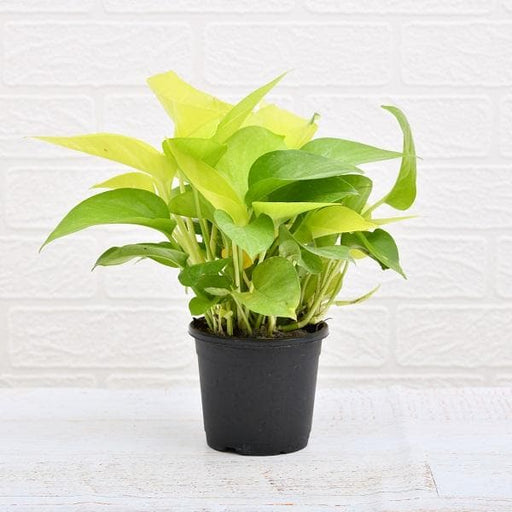 Save 29%
Save 29%
Air Purifier Money Plant with Pot The Air Purifier Money Plant, also known as Pothos or Epipremnum aureum, is a stunning indoor plant that...
View full details
 Save up to 15%
Save up to 15%
Peace Lily, Spathiphyllum - Plant The Peace Lily, scientifically known as Spathiphyllum, is a stunning houseplant celebrated for its elegant white...
View full details
 Save 25%
Save 25%
Jasminum sambac, Mogra, Arabian Jasmine - Plant Jasminum sambac, commonly known as Mogra or Arabian Jasmine, is a fragrant flowering plant...
View full details
 Save 18%
Save 18%
Combo Constituents Includes the Parijat Tree (Night-Flowering Jasmine), a culturally significant plant with fragrant flowers. Description The Pari...
View full details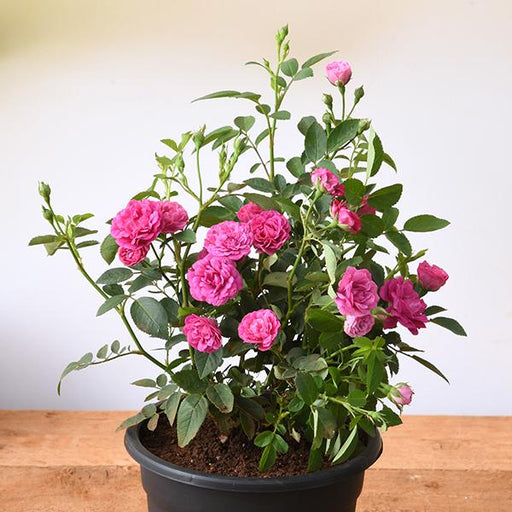
 Save 25%
Save 25%
Miniature Rose, Button Rose (Any Color) - Plant The Miniature Rose, also known as the Button Rose, is a charming and compact flowering plant that ...
View full details Save 25%
Save 25%
Damascus Rose, Scented Rose (Any Color) - Plant The Damascus Rose, also known as Rosa damascena, is a timeless symbol of beauty and romanc...
View full details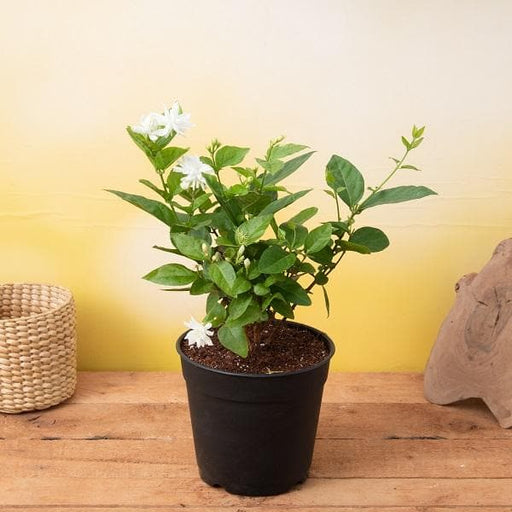
 Save 17%
Save 17%
Beautiful Fragrant Mogra, Arabian Jasmine Plant with Pot The Beautiful Fragrant Mogra, also known as Arabian Jasmine (Jasminum sambac), is...
View full details Save 15%
Save 15%
Pack of Vermicompost and Neem Cake for House Plants Transform your indoor garden with our premium Pack of Vermicompost and Neem Cake, spec...
View full details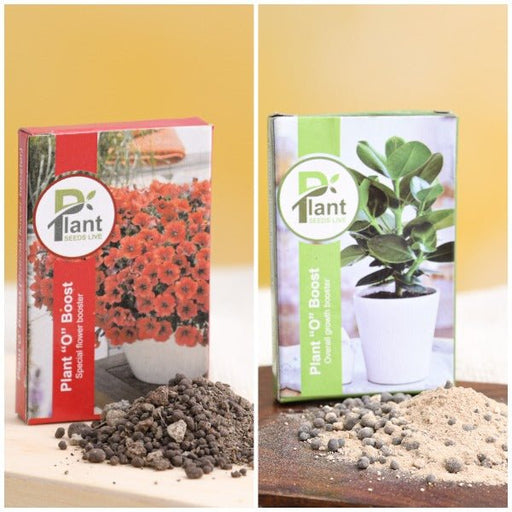
Pack of Plant Growth and Flower Boosters Unlock the full potential of your garden with our Pack of Plant Growth and Flower Boosters! This ...
View full details Save 38%
Save 38%
Combo of Jeevamrut and Neem Raksha for Easy Growth and Protection of Houseplants Transform your indoor garden with our exclusive combo of ...
View full details Save 22%
Save 22%
Plant Nutrients Kit (Pack of 16) for a Healthy Garden Transform your garden into a lush paradise with our Plant Nutrients Kit, featuring 1...
View full details Save 16%
Save 16%
Combo of Top Plant Fertilizers Elevate your gardening game with our exclusive Combo of Top Plant Fertilizers, featuring two bags of premiu...
View full details Save 24%
Save 24%
Pack of 4 Additives to Make Soil Healthy and Nutrient Rich Transform your garden into a thriving ecosystem with our Pack of 4 Additives de...
View full details Save 30%
Save 30%
Transform your gardening experience with our premium Combo of Perlite and Vermiculite. This unique blend is designed to enhance soil aeration and ...
View full details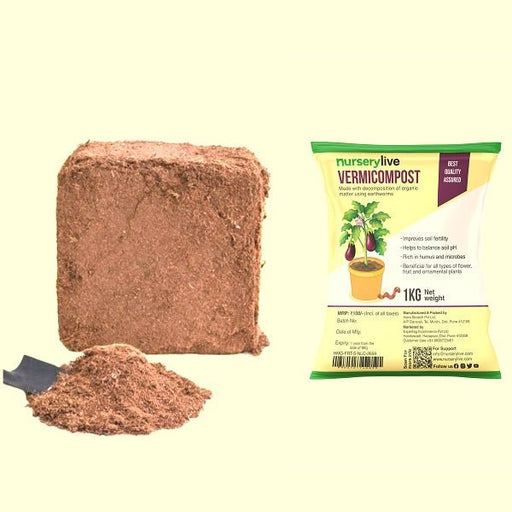 Save 27%
Save 27%
Combo of 2 Vermicompost and Cocopeat - Enrich Your Soil Naturally! Transform your garden into a thriving ecosystem with our Combo of 2 Ver...
View full details
 Save 35%
Save 35%
Best 6 Plants for Perfect Indoor Garden Transform your living space into a lush oasis with our curated collection of the Best 6 Plants for a...
View full details
 Save up to 50%
Save up to 50%
Mini Succulent Garden Pack Transform your space with our Mini Succulent Garden Pack, featuring a delightful collection of 4 any variety beautiful s...
View full details
 Save 30%
Save 30%
5 Best Fragrant Plants Transform your garden or indoor space into a fragrant paradise with our curated selection of the 5 Best Fragrant Plants. Th...
View full details
 Save 24%
Save 24%
Set of 2 Bonsai Looking Grafted Adeniums Transform your indoor or outdoor space with our exquisite Set of 2 Bonsai Looking Grafted Adenium...
View full details Save 45%
Save 45%
Top 4 Die Hard Succulents Pack Transform your indoor or outdoor space with our Top 4 Die Hard Succulents Pack, featuring a curated selecti...
View full details
 Save 30%
Save 30%
5 Best Indoor Plants Pack Transform your living space into a lush oasis with our '5 Best Indoor Plants Pack.' This carefully curated collection fe...
View full details
 Save 25%
Save 25%
Set of 4 Evergreen Air Purifier Plant Pack Transform your indoor space into a lush, green oasis with our Set of 4 Evergreen Air Purifier Pla...
View full details| SrNo | Item Name |
|---|---|
| 1 | Casearia esculanta |
Casearia esculanta, commonly known as the Indian butter tree, is a remarkable plant native to tropical regions. This deciduous tree can grow up to 15 meters tall and is celebrated for its edible fruits, which are rich in nutrients and have a unique flavor profile. The leaves and bark of the tree are also utilized in traditional medicine, making it a valuable addition to any garden or landscape.
What sets Casearia esculanta apart is its adaptability to various soil types and climates, making it an excellent choice for sustainable agriculture. Its fruits are not only delicious but also packed with vitamins and antioxidants, contributing to a healthy diet. Additionally, the tree plays a crucial role in soil conservation and biodiversity, making it an environmentally friendly choice for gardeners.
Casearia esculanta is known for its fast growth and resilience. It can thrive in poor soil conditions and requires minimal maintenance, making it ideal for both novice and experienced gardeners. The tree's ability to fix nitrogen in the soil enhances its surroundings, promoting a healthier ecosystem.
This tree isn’t just a pretty face in the botanical world; it’s a powerhouse of benefits! Known for its medicinal properties, Casearia esculanta is like the Swiss Army knife of trees. From anti-inflammatory effects to potential anti-diabetic properties, this tree has got your back. Imagine sipping a tea made from its leaves while basking in the sun—talk about a wellness retreat in your backyard!
If you’re wondering where this tree likes to hang out, think tropical! Casearia esculanta thrives in warm, humid environments, often found in the lush landscapes of South America. It’s like the tree version of a beach bum, soaking up the sun and enjoying the moisture. So, if you’re planning a trip to the tropics, keep an eye out for this leafy gem!
This tree is not just a wallflower at the botanical party; it has a variety of uses! From traditional medicine to timber, Casearia esculanta is the multitasker of the plant kingdom. Its wood is durable and can be used for construction, while its leaves are often brewed into herbal remedies. Talk about versatility—this tree is the ultimate overachiever!
Thinking of adding a Casearia esculanta to your garden? You’re in for a treat! Cultivating this tree is like hosting a low-maintenance guest who brings all the fun. It prefers well-drained soil and a sunny spot, making it a breeze to grow. Just remember to give it some space to spread its branches and watch it flourish like a star at a talent show!
Want to spread the love for Casearia esculanta? Propagation is easier than you think! You can start with seeds or cuttings, and before you know it, you’ll have a mini forest of these beauties. It’s like planting your own little army of green warriors ready to take on the world—one leaf at a time!
This tree is not just another face in the crowd; it has some standout characteristics! With its glossy leaves and attractive flowers, Casearia esculanta knows how to make an entrance. It can grow up to 10 meters tall, providing ample shade and a stunning focal point in any landscape. It’s the tree equivalent of a celebrity—always turning heads!
Even the most glamorous trees have their share of drama, and Casearia esculanta is no exception. While it’s generally resilient, it can attract pests like aphids and caterpillars. But fear not! A little vigilance and some natural pest control can keep your tree looking fabulous. After all, who doesn’t love a good plot twist in the garden?
If you want your Casearia esculanta to thrive, you need to roll out the red carpet for its soil! This tree prefers well-drained, loamy soil that’s rich in organic matter. Think of it as a diva that demands the best—give it the right conditions, and it will reward you with lush foliage and vibrant blooms.
Patience is a virtue, but with Casearia esculanta, you won’t have to wait too long! This tree boasts a moderate growth rate, making it a delightful addition to your garden without the agonizing wait. In just a few years, you’ll have a stunning specimen that’s ready to impress your neighbors and provide shade for your summer picnics.
If you’re into herbal remedies, Casearia esculanta is your new best friend! This tree has been used in traditional medicine for centuries, boasting properties that may help with everything from digestive issues to skin ailments. It’s like having a natural pharmacy right in your backyard—just don’t forget to consult a professional before diving into the herbal world!
This tree isn’t just a pretty sight; it plays a vital role in the ecosystem! Casearia esculanta helps improve soil quality and provides habitat for various wildlife. It’s like the unsung hero of the forest, quietly doing its part to keep the environment healthy. So, planting one of these trees is not just a gift to yourself but to Mother Nature as well!
Casearia esculanta, also known as the wild guava, is a tropical tree native to South America. It’s not just a pretty face; this plant boasts edible fruits and medicinal properties. Think of it as nature’s multitasker, providing both delicious snacks and potential health benefits. Who knew a tree could be so talented
You can find Casearia esculanta thriving in tropical regions, particularly in Brazil and parts of the Amazon. It loves warm, humid climates, so if you’re planning a tropical getaway, keep your eyes peeled for this gem. Just don’t forget your sunscreen while you’re on the hunt for this fruity treasure!
Growing Casearia esculanta is like hosting a tropical party in your garden. It prefers well-drained soil and plenty of sunlight. Plant the seeds in a warm spot, water them regularly, and watch them flourish. Just remember, patience is key; good things take time, especially when it comes to growing your own wild guava!
Casearia esculanta isn’t just a pretty fruit; it’s packed with benefits! The fruit is rich in vitamins and antioxidants, making it a tasty addition to your diet. Plus, traditional medicine often uses its leaves for various ailments. So, indulge in this fruity delight and let it work its magic on your health!
Absolutely! Casearia esculanta produces small, edible fruits that are a delightful treat. They can be eaten fresh or used in jams and jellies. Just think of it as nature’s candy, waiting to be enjoyed. So, if you stumble upon this wild guava, don’t hesitate to take a bite; your taste buds will thank you!
The taste of Casearia esculanta is a delightful surprise! Imagine a mix of guava and a hint of citrus, with a touch of sweetness. It’s like a tropical vacation for your taste buds. Whether you eat it fresh or whip it into a smoothie, this fruit is sure to brighten your day!
Yes, indeed! Casearia esculanta has a long history of medicinal use in traditional practices. Its leaves are often brewed into teas for their potential health benefits, including anti-inflammatory properties. So, if you’re feeling under the weather, consider brewing a cup of wild guava goodness. Just don’t forget to enjoy the taste while you’re at it!
Harvesting Casearia esculanta is like a treasure hunt! Wait until the fruits are ripe, usually when they turn a lovely yellow or orange. Gently twist or cut them from the tree, being careful not to damage the branches. Once you’ve gathered your bounty, it’s time to enjoy the fruits of your labor—literally!
Casearia esculanta has a bit of a tough side! While it prefers moist conditions, it can tolerate short periods of drought. However, don’t push your luck; consistent watering will keep it happy and thriving. Think of it as a diva that occasionally likes to test the waters but ultimately prefers a little pampering.
Like any star, Casearia esculanta has its share of admirers—some of whom are pests! Common culprits include aphids and caterpillars. Keep an eye out for these uninvited guests, and consider natural pest control methods to keep your wild guava thriving. After all, every diva needs a good bodyguard!
Yes, Casearia esculanta can be a pot star! If you’re short on garden space, growing it in a pot is a fantastic option. Just ensure the pot has good drainage and provide plenty of sunlight. With a little love and care, you can enjoy this tropical beauty right on your balcony!
Casearia esculanta thrives in a warm, tropical climate. It loves temperatures between 20-30°C (68-86°F) and plenty of humidity. If you live in a cooler area, consider growing it indoors or in a greenhouse. Just remember, this plant is a sunbather at heart, so give it the warmth it craves!